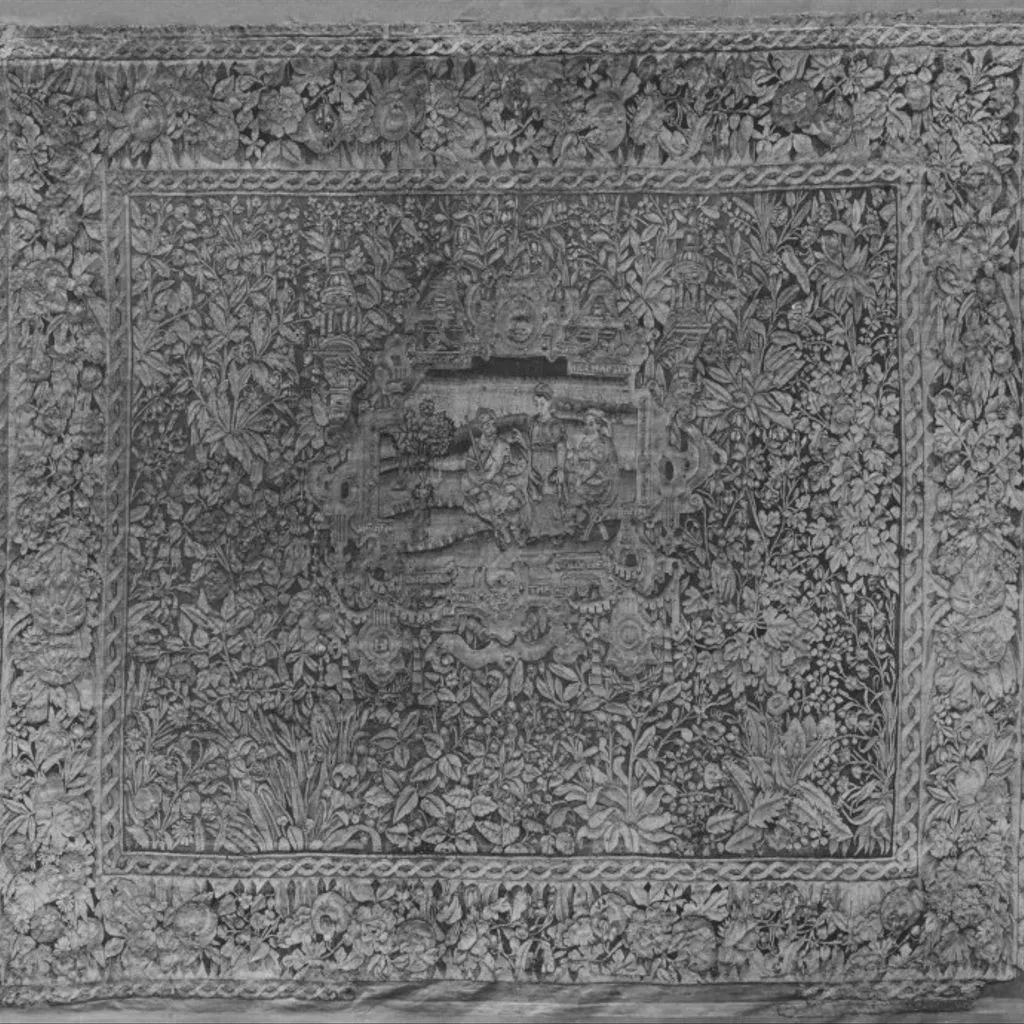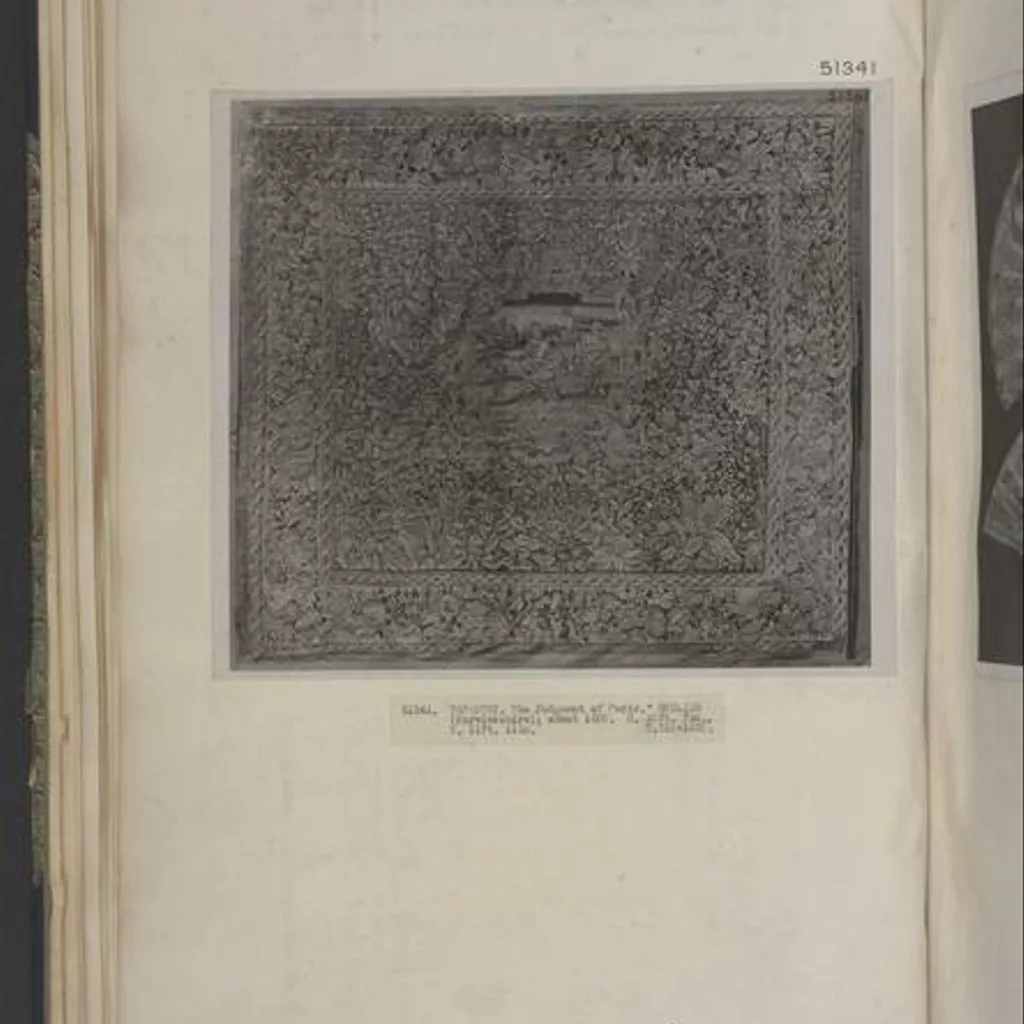Description
Object type
Rich and noble families often owned large numbers of tapestries which could be transported as required from house to house. Some tapestries had a decorative design using popular motifs, while others told a story. According to the inscription round the picture, this tapestry depicts a classical theme, its subject Paris giving the Golden Apple. The tale comes from the Epistles of the Latin poet, Ovid.
Manufacture
In 1570 William Sheldon, a prosperous Worcestershire gentleman, set up a tapestry workshop in his manor house at Barcheston, now in Warwickshire. His intention was to provide a remedy for the high local unemployment which, by training tapestry weavers, would also cut down the level of goods imported from Flanders (now part of Belgium) and the Netherlands, the traditional areas of the weaving craft. His head weaver almost certainly came from those regions and was engaged to teach his skills to local Englishmen. Few of the Sheldon tapestries rivalled the more sophisticated work produced in Flanders and most of the products attributed to the Sheldon looms are relatively modest in size and style. They were therefore within reach of the middle classes of society. Production continued through the lifetime of William’s son, Ralph, but had almost certainly ceased by 1615.
People and Places
The initials HI, seen to the left and right below the central scene, are thought to be those of Henry, son of Walter Jones, first owner of this tapestry. Son of a Witney woollen merchant, Walter went to Oxford University; after a legal training he became Town Clerk of Worcester. He bought Chastleton House (Oxfordshire) from Robert Catesby, a bankrupt Sheldon relative later involved in the Gunpowder Plot of 1605. Jones rebuilt Chastleton, where the tapestry was found, as an imposing Jacobean house, displaying coats of arms not his own in several prominent places. A chimney piece was carved with the Sheldon arms, and, in an inventory of 1633, a bedroom in the house was described as ‘Mr Sheldon’s chamber’. The arms, and room, can still be seen; the house is now owned by the National Trust.
THE JUDGEMENT OF PARIS
Tapestry depicting the Judgement of Paris
British Galleries:
Tapestries were a vital element in 17th-century interiors and provided warmth as well as vividly-coloured decoration for walls. The scene in the middle is based on the Greek legend of the Judgement of Paris. Paris was required to award a golden apple to one of three goddesses who offered him different gifts. He won the love of Helen, the most beautiful woman in the world, but this led to the war between the Greeks and the Trojans. [27/03/2003]








